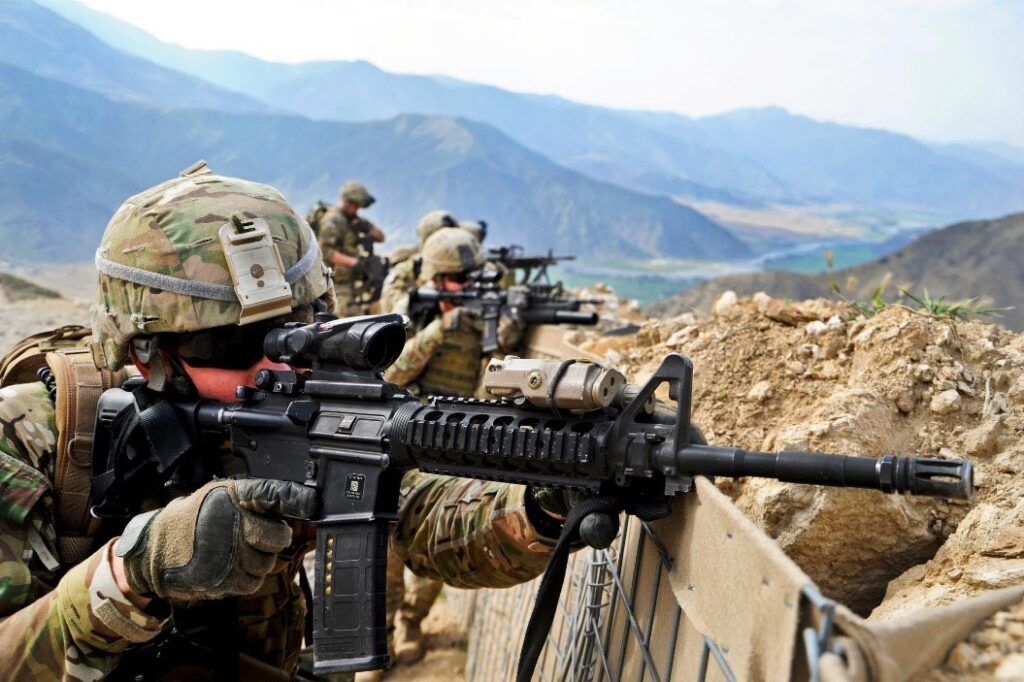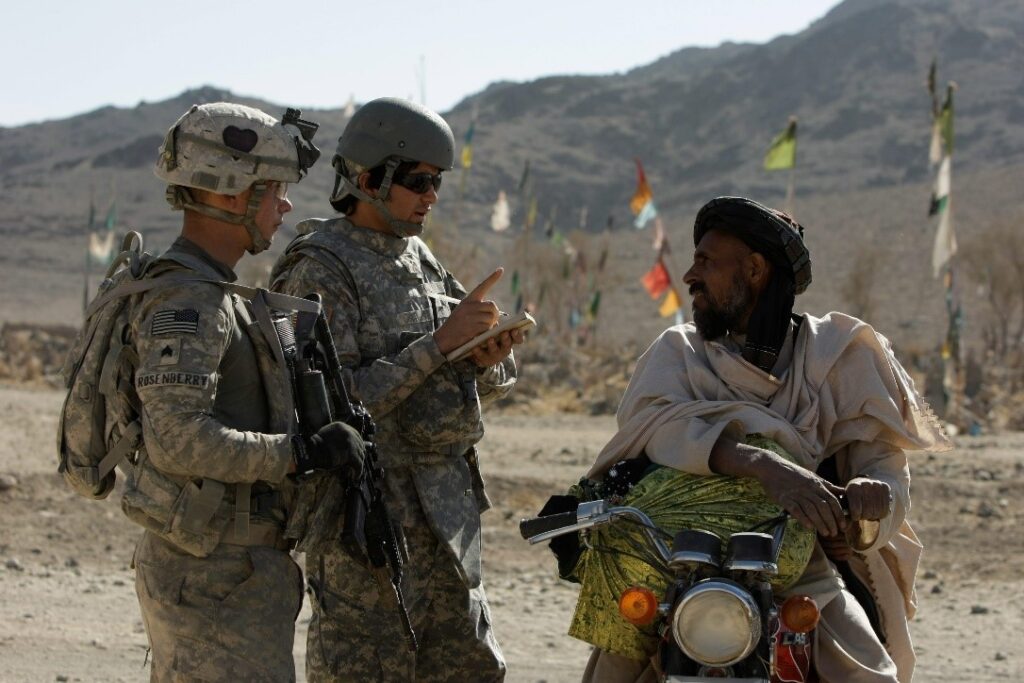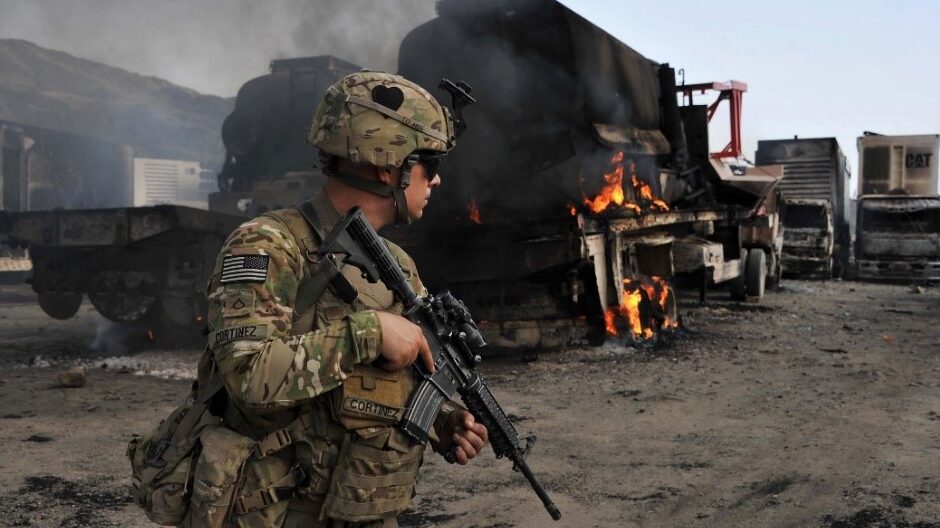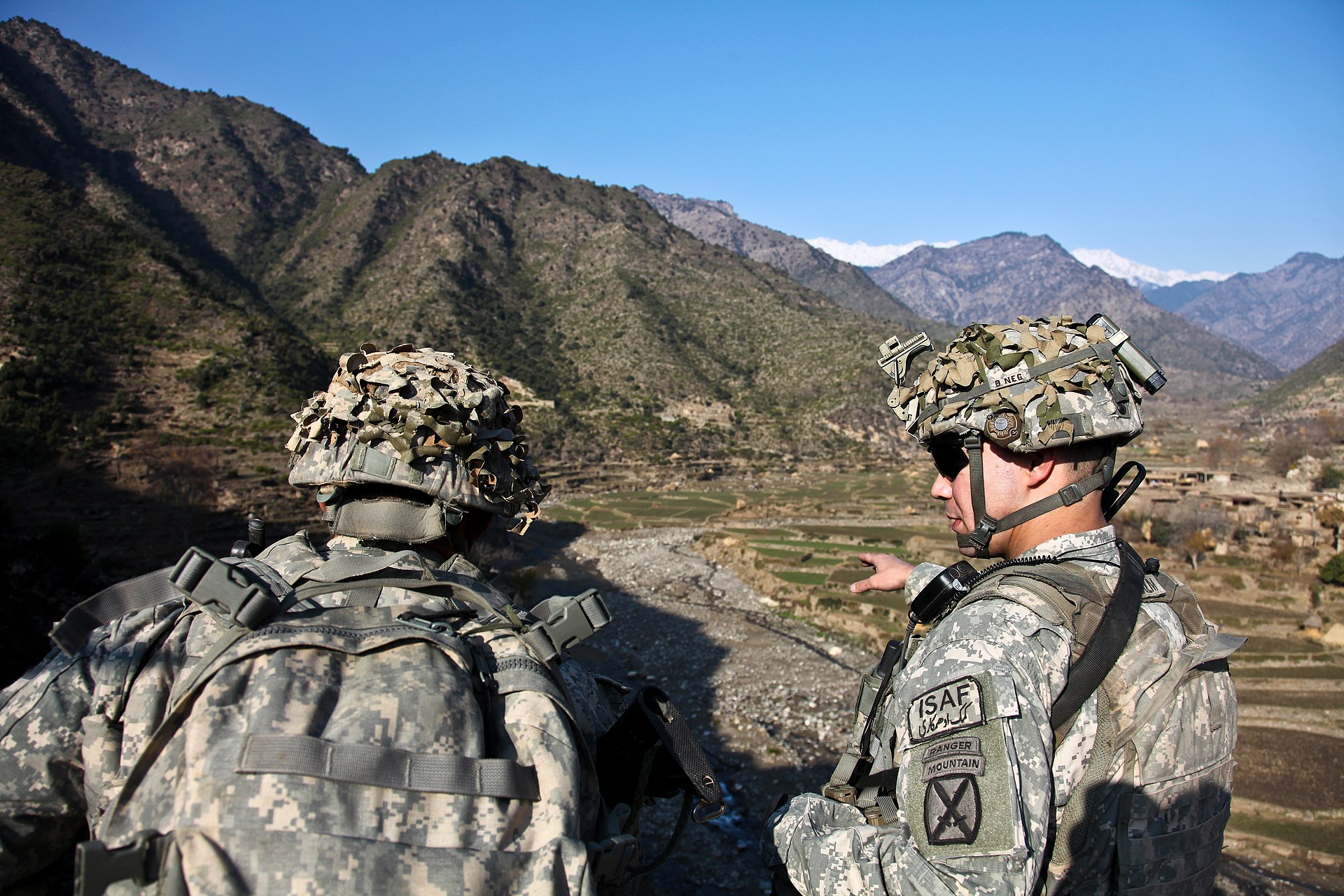On Oct. 7, 2001, less than a month after the Sept. 11th terror attacks, U.S. warplanes bombed targets in Afghanistan in what would be the opening offensive of Operation Enduring Freedom, the effort to drive the Taliban and al-Qaida from the country and install a democratic government.
United States Toppled the Taliban-Ruled Islamic Emirate of Afghanistan
CIA operatives and U.S. Special Forces teamed with the mostly-Tajik Northern Alliance to take Kabul, Mazar-i-Sharif, and other cities under an air umbrella that was provided primarily by the Navy and used Joint Direct Attack Munitions to devastating effect.

Then-Marine Brig. Gen. Jim Mattis led Task Force 58, consisting of the 15th and 26th Marine Expeditionary Units, on an air assault that eventually resulted in the taking of Kandahar, the birthplace of the Taliban movement.
By Dec. 9, 2001, the Taliban had collapsed, and leader Mullah Omar had fled to Pakistan. Then, the U.S. focus turned to the invasion of Iraq.
On Oct. 7, 2018, the military endgame for the U.S. in Afghanistan was still an increasingly difficult and long-term work in progress. That date marked the start of the 18th year of war in Afghanistan-a war that has claimed thousands of American lives and shows no clear indication of ending.
The resurgent Taliban is back and firmly in control of large swaths of territory. Osama Bin Laden is dead, but U.S. and Afghan special forces are still on the hunt for elements of al-Qaida. The new terrorist factor is the ISIS offshoot called Islamic State-Khorasan Province, or “ISIS-K.”
The “blood and treasure” costs to the U.S. continue to mount.
Army National Guard Spec. James A. Slape, 23, of Morehead City, North Carolina, was killed by an improvised explosive device in contested southwestern Helmand province, the center of Afghanistan’s thriving poppy trade.
He was the seventh combat fatality and eighth overall for the U.S. this year. Since the war began, at least 2,414 U.S., 455 British, and 686 troops from other coalition nations have been killed in Afghanistan for a total of 3,555, according to the iCasualties Iraq.

Depending on who is doing the counting, and how it is done, the estimates for the costs of the war for the U.S. since 2001 have generally exceeded $1 trillion. The Pentagon estimates the U.S. will spend at least $45 billion on the war effort this year.
The Main Goal of the War in Afghanistan
Since 2001, U.S. policy has changed radically. The main goal is no longer to drive the Taliban out of Afghanistan but rather to drive them into a negotiated peace settlement to end the war, according to Army Gen. John Nicholson. He recently turned over command of U.S.-Forces Afghanistan and the NATO Resolute Support Mission to Army Gen. Scott Miller.
At his Senate confirmation hearing in June, Miller said he would not talk about turning points “unless there is one” and that he could not guarantee “a timeline or an end date” to the war.
The estimated 14,000 to 15,000 U.S. troops in Miller’s command are operating under a new strategy for Afghanistan announced in August 2017 by President Donald Trump.
At the time, Trump acknowledged that his first instinct was to withdraw all U.S. forces. Still, he agreed with the advice of Mattis and others to initiate a “conditions-based” approach with no timelines that would put more focus on counter-terror raids and airpower to back the increasingly stressed Afghan security forces.
On Sunday, the top headline for Afghanistan’s TOLO news agency was from a Pew Research Center report: “Study Finds Americans Feel U.S. Involvement Has Failed.“

The Pew poll of 1,745 people, conducted Sept. 18-24, showed that 49 percent believed the U.S. effort in Afghanistan to be a failure.
Also, on Sunday, veteran diplomat Zalmay Khalilzad arrived in Kabul as the new U.S. Special Representative for Afghanistan Reconciliation. His remarks echoed what other U.S. envoys have said going back to 2001.
“I will cooperate with Afghan officials and other influential Afghans to reach a peace” to end more than 40 years of conflict in Afghanistan stretching back to before the Soviet invasion in 1979, he said.
“We in cooperation want to make a peaceful Afghanistan,” he said, “where all tribes see themselves included, have the right to choose and will try to achieve a result that should deserve the sacrifices made during the years.”
Read About Other Battlefield Chronicles
If you enjoyed learning about America’s War in Afghanistan, we invite you to read about other battlefield chronicles on our blog. You will also find military book reviews, veterans’ service reflections, famous military units and more on the TogetherWeServed.com blog. If you are a veteran, find your military buddies, view historic boot camp photos, build a printable military service plaque, and more on TogetherWeServed.com today.

0 Comments